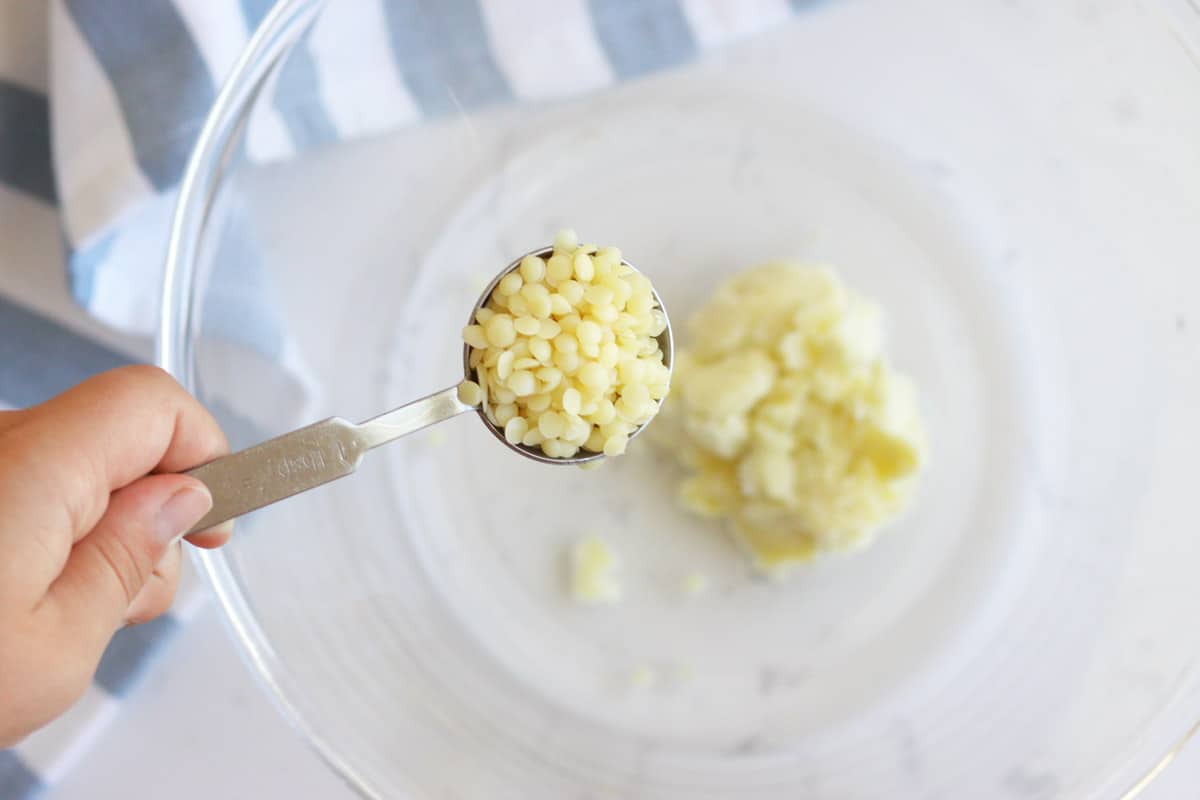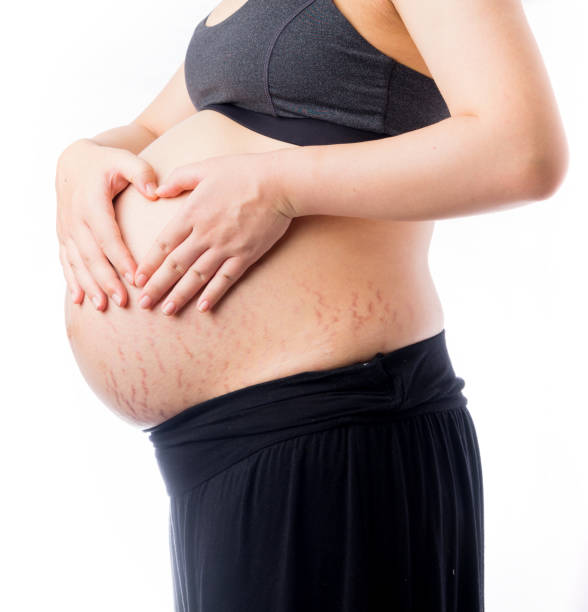Stretch marks are a worry for many people, especially pregnant women and those who just had a baby. Regardless of when they appear, these marks can impact your self-confidence. While they are a natural part of life for many, the desire to diminish or eliminate these marks has led to the exploration of various methods and remedies. In this guide, we delve into effective strategies and treatments aimed at reducing the appearance of stretch marks, offering insights into skincare, lifestyle adjustments, and potential interventions.
Read on to discover the secrets of fading stretch marks together!
What are stretch marks?
Stretch marks (also known as striae) manifest as discolored, faintly indented lines resembling scars on the skin. Usually, these marks appear in certain parts of your body, like the stomach, legs, hips, chest, arms, lower back, and buttocks. These lines, often bearing a different hue than the surrounding skin, create a distinctive pattern across these regions.
What are the common causes of stretch marks?
Stretch marks are common, affecting up to 80% of pregnant women and 50% of teenagers. They are formed when the skin quickly changes in size, either by stretching or shrinking, which can damage the collagen and elastin fibers that give the skin its strength and elasticity The main causes include:
- During puberty, your body undergoes rapid growth spurts, stretching your skin quickly and leading to stretch marks.
- During pregnancy, the skin stretches as the baby grows, causing stretch marks. Other factors include puberty and weight changes. Doing intense weight training or muscle-building exercises can cause rapid muscle growth, which stretches the skin and creates stretch marks.
- When you gain or lose weight quickly, the skin may not be able to keep up with the changes, leading to the formation of stretch marks.
What are the symptoms of stretch marks?
Stretch marks have unique visual and tactile traits that define their symptoms. When stretch marks appear, they usually have bright colors like red, purple, pink, or dark brown. The color depends on the person’s skin tone. These initial marks may feel slightly raised and can induce itching.
Here are some common symptoms of stretch mark:
- Indented streaks or lines on the abdomen, breasts, hips, buttocks or other places on the body.
- Pink, red, discolored, black, blue or purple streaks.
- Bright streaks that fade to a lighter color.
- Streaks covering large areas of the body.
11 Effective Treatments For Stretch Marks
Can you get rid of stretch marks? Although, there is no secret cure-all ingredient for stretch marks yet, some home remedies can help minimize the appearance of stretch marks and could help them fade more quickly. Newer stretch marks are more likely to respond to treatments.
Natural remedies for stretch marks
Hyaluronic acid
Hyaluronic acid is a powerful ingredient that helps moisturize and heal the skin. This ingredient is often found in creams, lotions, and serums. It helps keep your skin healthy. When you see stretch marks, it means your skin has changed. These changes make the skin less flexible because collagen is not as effective at strengthening it.
Centella
Centella Asiatica is a herb in K-beauty products that is becoming popular for its skincare benefits. These products are called circa creams. They have Centella and are used for scars and sensitive skin. Circa creams are becoming popular in the US, but they can be expensive. Centella Asiatica stimulates collagen and reduces inflammation.
Sugar
Sugar is often used to gently remove dead skin cells and make the skin smoother. Dermatologists use microdermabrasion to make stretch marks less visible. So, using a homemade sugar exfoliating remedy might be a good idea. It’s likely that you already have the necessary ingredients at home
Aloe vera
Aloe vera has a storied history as a natural solution for various skin issues. You can apply aloe vera gel directly to your skin for its calming and moisturizing effects. While there isn’t much clinical evidence proving aloe vera as a cure for stretch marks, its skin-softening and healing qualities make it worth considering.
Coconut oil
Using pure coconut oil helps keep the skin’s protective barrier, giving it many benefits. In 2015, a study in Dermatology and Therapy found that gentle massage may prevent stretch marks. In this study, 100 pregnant women were split into two groups. One group got gentle massages, while the other group didn’t get any massages. If you have an allergy to coconut oil, it’s best to stop using it. It can cause serious skin allergies and sensitivities.
Vitamin A
Vitamin A can make the skin smoother and more youthful when added to skincare products. Unfortunately, there haven’t been many recent or large studies on how well tretinoin works for stretch marks. If you are pregnant, breastfeeding, or trying to get pregnant, it’s best to avoid using it because it can be risky for pregnancy.
Medical treatments for stretch marks
Medical treatments for stretch marks focus on making them look better, but it’s hard to get rid of them completely. Here are some medical treatments that may be considered:
Topical Retinoids
You can use prescription-strength retinoids, like tretinoin, to make collagen and lessen stretch marks. However, their use should be avoided during pregnancy.
The study “A Comparative Study of the Efficacy of Topical Retinol Versus Microdermabrasion in the Treatment of Striae Rubrae (2021)” compared the efficacy of topical retinol and microdermabrasion in the treatment of striae rubrae, which are early-stage stretch marks that appear red or purple. It found that both treatments were effective in improving the appearance of stretch marks, but topical retinol was more effective.(Journal:Dermatologic Therapy)
Laser Therapy
Different laser treatments, like fractional laser therapy, can focus on the red or pigmented color of stretch marks. This stimulates collagen production and makes the skin texture better.
The study “The Efficacy of Fractional Laser Therapy for the Treatment of Striae Distensae: A Systematic Review and Meta-Analysis” (2023) showed that fractional laser therapy works well for stretch marks. It is more effective for early-stage marks than mature ones. (Journal: Lasers in Surgery and Medicine)
Microdermabrasion
To encourage the growth of new, stretchy skin, this procedure exfoliates the outer skin layer. You can use it for older stretch marks.
Microneedling
This involves the use of a device with fine needles that create tiny punctures in the skin. Microneedling can stimulate collagen production and improve skin texture.
Chemical Peels
Superficial chemical peels can improve stretch mark texture by removing the top layer of skin. This promotes new skin growth.
Radiofrequency Therapy
This treatment uses radiofrequency energy to heat the skin and stimulate collagen production, potentially improving the appearance of stretch marks.
Platelet-Rich Plasma (PRP)
PRP therapy involves using the patient’s own blood plasma, rich in platelets, to stimulate collagen and elastin production.
You should consult with a dermatologist or healthcare professional to determine the most appropriate treatment based on the type and age of the stretch marks, as well as individual health considerations. Additionally, the effectiveness of these treatments can vary, and multiple sessions may be required for noticeable results.
How To Prevent Stretch Marks During Pregnancy?
Preventing stretch marks during pregnancy involves a combination of maintaining skin elasticity, staying hydrated, and adopting healthy lifestyle habits. While it’s not always possible to completely avoid stretch marks, these tips may help minimize their development:
- Stay Hydrated: Drink plenty of water to maintain skin elasticity.
- Balanced Diet: Consume a diet rich in vitamins and minerals, especially vitamin C and E, which promote skin health.
- Gradual Weight Gain: Aim for a gradual and steady weight gain during pregnancy to reduce the risk of rapid stretching of the skin.
- Moisturize: Regularly apply a moisturizer or oil to keep the skin hydrated. Cocoa butter, shea butter, and almond oil are popular choices.
- Gentle Massage: Use gentle massage techniques to promote blood circulation and flexibility in the skin.
- Wear Supportive Clothing: Choose comfortable and supportive clothing to minimize friction on the skin.
- Do Exercise: Engage in pregnancy-safe exercises to help improve circulation and keep the skin healthy.
- Collagen-Boosting Foods: Include foods rich in collagen-building nutrients, such as protein-rich foods, fruits, and vegetables.
Conclusion
Addressing and managing stretch marks involve a combination of practical steps, from maintaining a consistent skincare routine to exploring various treatment options. While complete elimination of stretch marks might be challenging, the focus should be on promoting overall skin health, embracing one’s natural body changes, and fostering self-confidence. By adopting a holistic approach and seeking professional guidance, individuals can navigate the journey of minimizing stretch marks and fostering a positive relationship with their skin. Remember, it’s not just about getting rid of stretch marks; it’s about cultivating a sense of well-being and self-acceptance.
FAQs
- Are there specific exercises that can help fade stretch marks?
While exercise cannot directly eliminate stretch marks, it can indirectly contribute to their fading by improving overall skin health and elasticity. Here are some specific exercises that may be beneficial: Cardio, Yoga and Pilates, Strength training,…
- What are the benefits of laser therapy for stretch marks?
Laser therapy has many benefits like better skin, less scarring, and customizable treatment. It also stimulates collagen.
- Is there a permanent solution for eliminating stretch marks?
Right now, there isn’t a perfect way to get rid of stretch marks completely, but different treatments can make them look much better.
- What role does nutrition play in managing and preventing stretch marks?
Diet plays an important role in managing and preventing stretch marks.Eating a balanced diet helps keep skin healthy and elastic by providing essential nutrients.
- How to treat stretch marks on face?
Stretch marks typically do not occur on the face. The face is less prone to the types of stretching that lead to the development of stretch marks.











